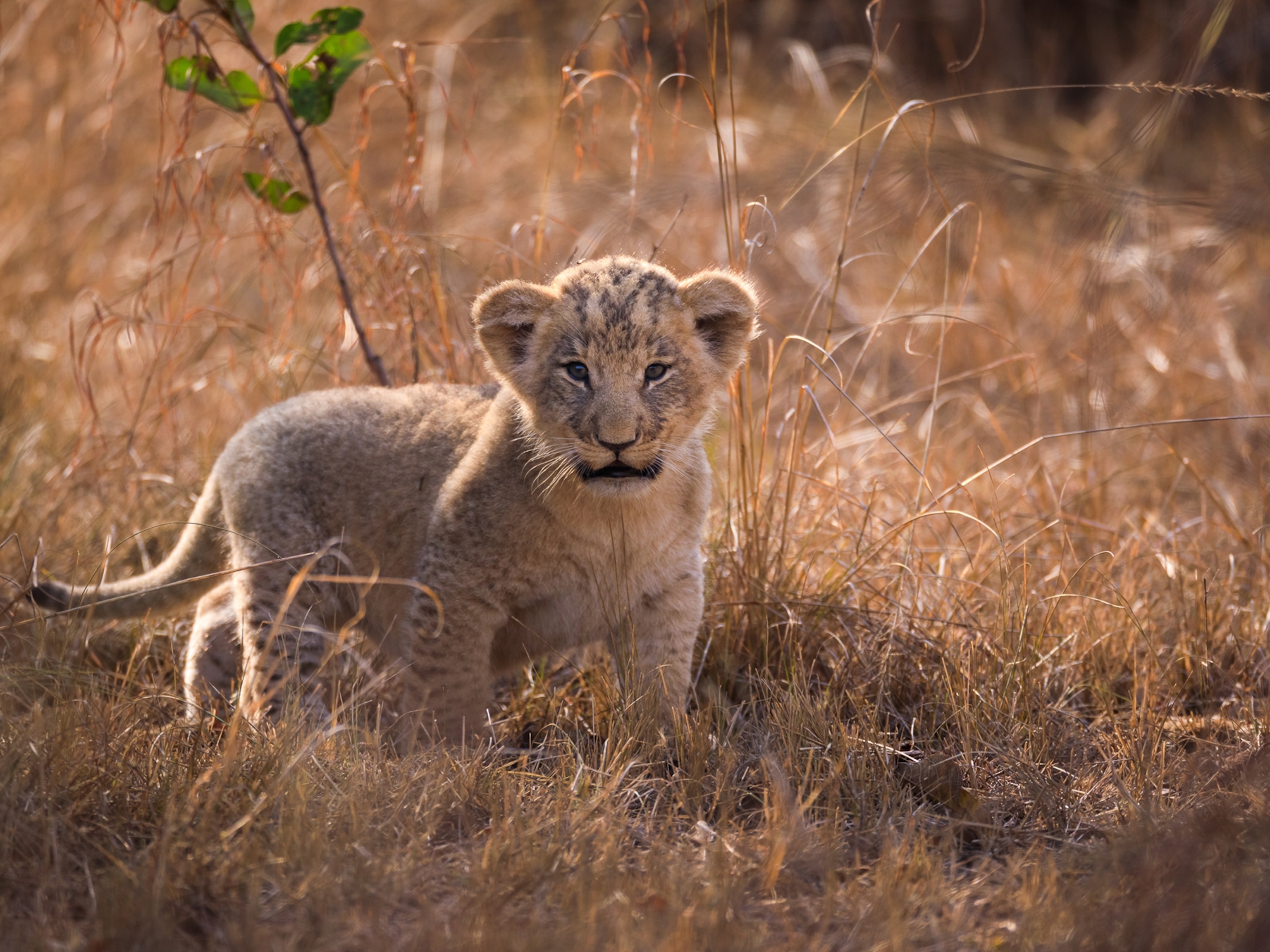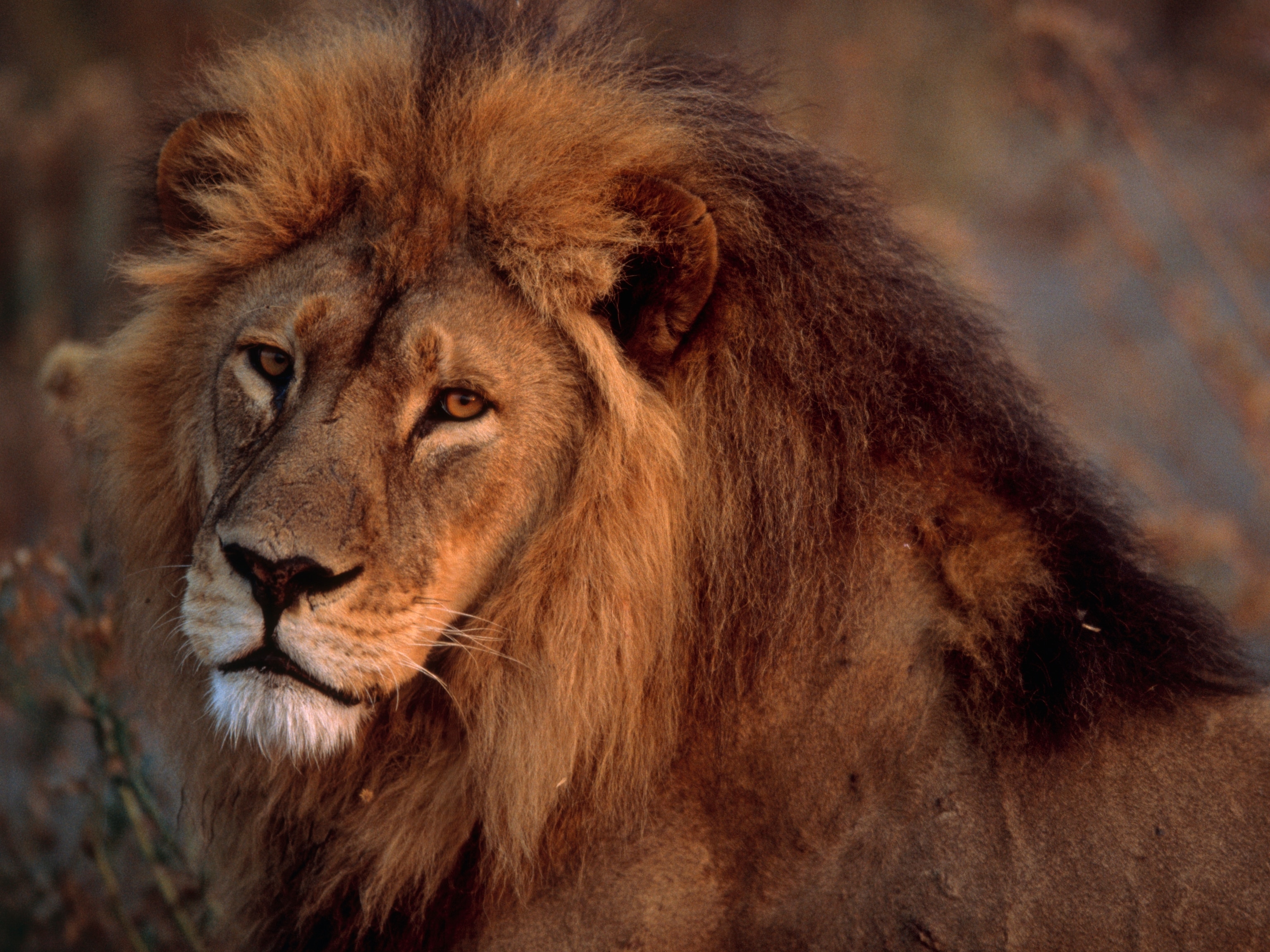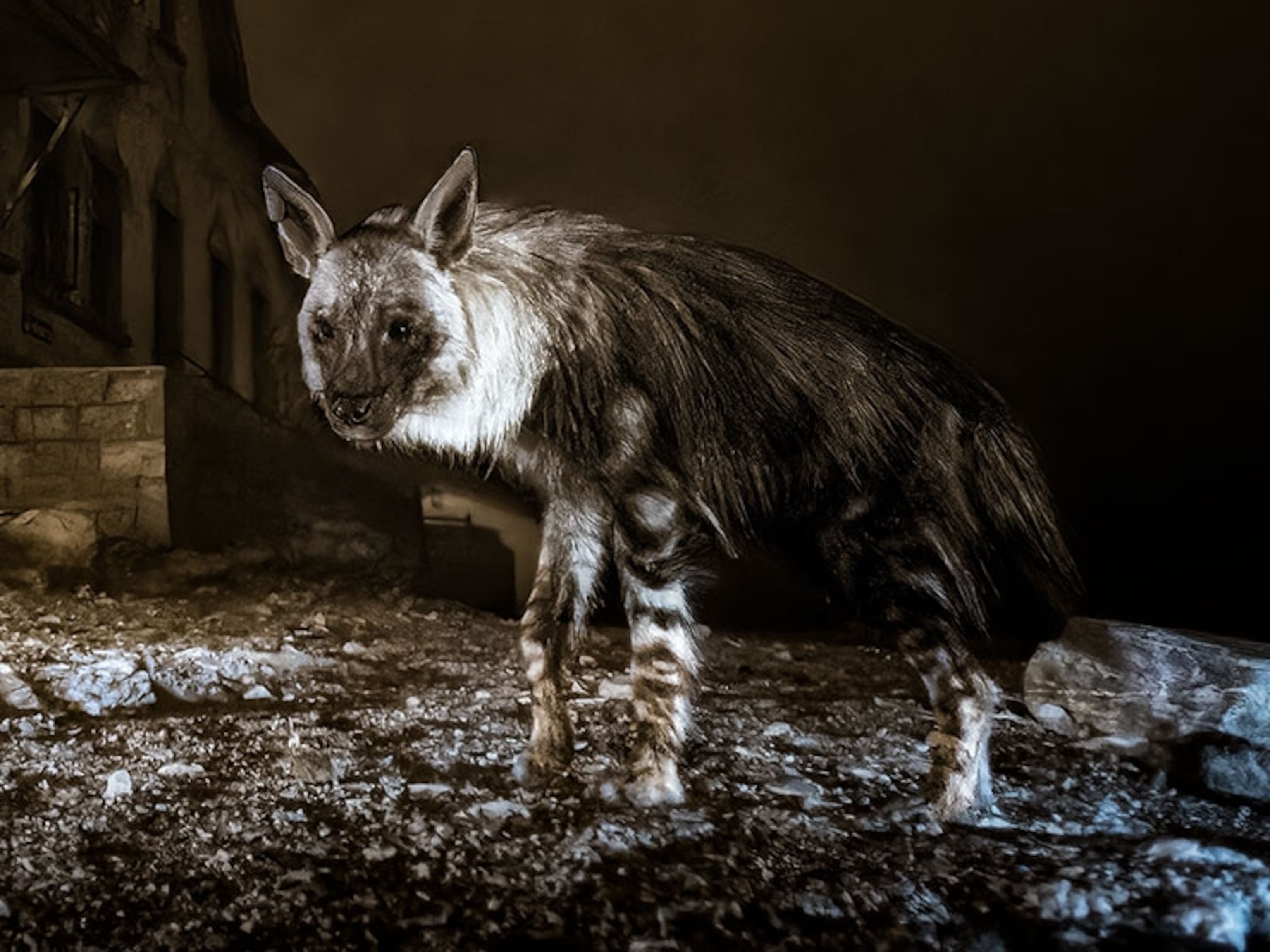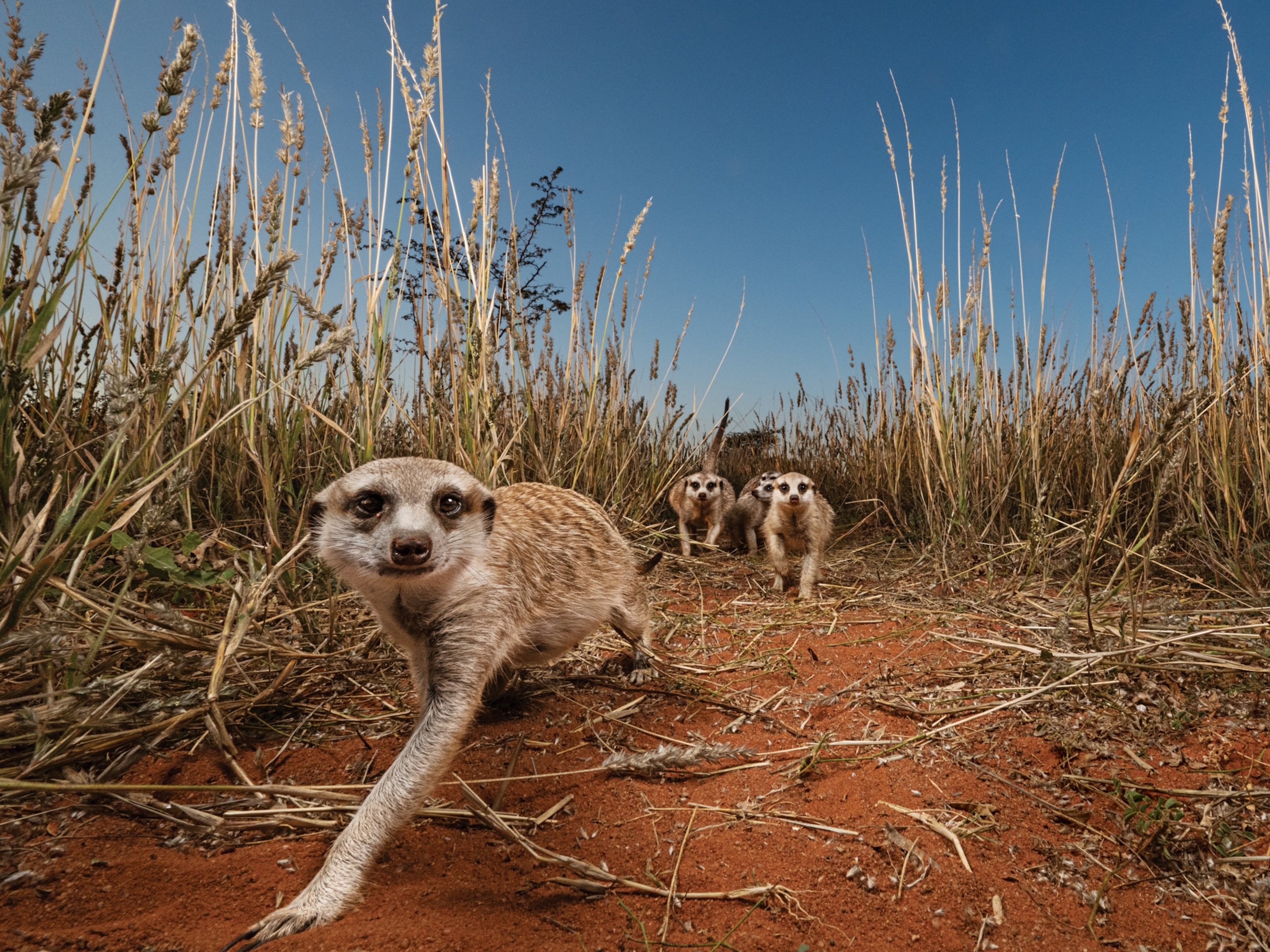A Lioness Killing a Leopard Cub Floored These Filmmakers
Savage Kingdom filmmakers take us behind the scenes to Chobe National Park, where predators vie for dominance in times of drought.
Chobe National Park, Botswana — Think it's a tough world out there? Be thankful you're not a predator in Botswana's Chobe National Park.
When the Savute Channel floods, wild dogs, lions, leopards, and hyenas thrive in a time of plenty. But when this tributary of the Chobe River dries up—about every five to seven years—it's dog-eat-dog for these carnivores, which constantly battle one another for limited prey. (Also see "Elephant Refugees Flee to Last Stronghold in Africa.")
In the new Nat Geo WILD miniseries, Savage Kingdom, filmmakers follow five "dynasties" as they vie for power over their desert kingdom. While in Botswana, I caught up with filmmaker Brad Bestelink and cameraman Richard Uren, of the Natural History Film Unit, to get more of the backstory behind this brutal clash of clans.
CD: How did Savage Kingdom come about?
BB: We had been filming in Savute for about three years. We saw all the various families of predators booming on the lush resources. [But as the water began to disappear], we knew all these predators would be drawn into [one] small pool. It’s a bit like a hangman’s noose; as the water disappears, it shrinks tighter and tighter and tighter, so it’s forcing all these predators into one environment. We put it forward and with Nat Geo we coined the idea of making it like “Big Game of Thrones.” Ultimately there are finite resources and multiple different families and factions that fight for those resources. (Read more about the dangers of the Savute.)
How did you choose the characters?
RU: They chose themselves. The lioness, Matsumi, was named by the locals because Matsumi means huntress, and she was the one leading the pack every time they hunted. [Saba the leopard], the area she’s in is the area where we work [a rocky outcropping called Leopard Rock], so we know her so well. She’s a very strong character and is also very relaxed with us—she will pass and not even look at us. As for the dogs, we have a southern pack and a northern pack. The way we’ve done it, by sticking with the southern pack, is great because they’re smaller and are also quite distinctive, because they are very blond. Hyenas are tougher because they move around mostly at nighttime.

I noticed that in the first episode, hyenas are portrayed as evil. Was that intentional?
RU: From the lions’ perspective they are evil, from the dogs’ perspective they are evil, but when you get to the hyenas’ perspective, they’re not evil. We didn’t want to portray them as evil; they are actually beautiful animals. Especially when you [see pups playing at] a den site—that will change everyone’s minds on the hyena. (Take the quiz: Which Savage predator are you?)
So it's a matter of perspective.
RU: Yes, that’s the whole plan for these episodes; that’s how they would come together.
BB: The biggest moment in this whole series in when Matsumi kills Saba’s cub. It really brought Game of Thrones to the forefront for me. You like the Starks but you also like the Lannisters—it depends on your perspective. To have the two main heroines kill each other’s offspring—you couldn’t have scripted that. Do you love one and hate the other? You can’t ever understand if you pick sides. For Matsumi, it was a problem, it was dealt with. She didn’t think twice, she moved on. From Saba's side, it changed her entire life.
She left Leopard Rock, right?
BB: Absolutely.
It's amazing you were there to film Matsumi killing the cub.
RU: Brad was following Matsumi because she was going to look for a den site [at Leopard Rock]. Matsumi had disappeared into the rocks … I said I’d watch for her. And the next minute [Brad] got on the radio and said, 'The cub’s here. I don’t know what’s happening, but the leopard cub’s here.' And then next minute he said, ‘Geez, you won’t believe it, Matsumi has just eaten the bloody cub.’ It was sad.
Is it hard to stay emotionally detached?
RU: When you’re filming, you are detached because you’re concentrating on getting the behavior. When you look back at your footage, it settles in. [When Matsumi killed the cub, Saba] took the cub into the tree and sat with the cub for more than half the day. That’s when it kind of got to me.
Do you think she was mourning?
RU: I’d say she mourned. [Saba] put a lot of energy into the cub and all of the sudden that energy’s gone. There’s got to be a shock there. But they have a switch and they get over it. She was very aggressive and did try to attack Matsumi [after the lioness killed the cub].
How does Savage Kingdom differ from previous wildlife documentaries?

BB: It’s not about statistics or numbers or science; it’s about families and lives. We tried to enable the viewer to be emotionally guided ... It makes you understand the story better and really brings it to life. I don’t want to know that a lion can run 45 kilometers an hour, and a warthog can only run 35 but the warthog has more stamina than the lion—that to me is not compelling information. For me it’s about mothers and their children and survival and their dynasties. It’s falling in love with the character and understanding their plight.
RU: Definitely the narration. It feels more like a story, a feature film, than a documentary that’s giving you facts. There’s a lot of wildlife documentaries—we know the [basic] facts now. We’re trying a new angle and creating a story out of it. There’s a lot more quiet; you get a chance to figure out for yourself what’s going on because the pictures tell you. And the person who’s narrating is saying exactly what needs to be said, instead of, ‘The lion looks right, the impala’s coming.’
You don't sugarcoat what happens to these animals.

BB: People need to see the struggle that these animals go through to really care about them. Forget human impact—these animals are fighting for their lives every single day. Their struggle is so profound—we should know it and see it. There’s nothing gratuitous about the violence or the kills … it grounds the reality of their lives a bit more. I think that people will respect that. It’s not Bambis and rainbows—you can’t just brush it aside.
Are there some unusual or notable moments that stand out from filming the series?
BB: Saba’s ability to map potential meals and then decide when to call them in is something we’ve been watching her do for years. She will find chicks in a nest and not eat the chicks. Then when she’s out hunting, and she fails, she fails, she fails—and she really, really needs a meal—she’ll go to the nest because she knows there’s a resource there. I don’t think anyone’s done scientific work on that. We've seen it with giant eagle owl, barn owl, and fish eagle [nests].
Is there anything you would tell our readers? They come from all over the world.
RU: The most important thing we’re trying to do is show what a beautiful wilderness we have. These animals are living their own lives—there’s no one interfering.
BB: I hope that people recognize it for what it is—an honest, untarnished portrayal of a struggle. It’s not Disney—it’s real animals and real lives.
This interview has been edited for length and clarity.







